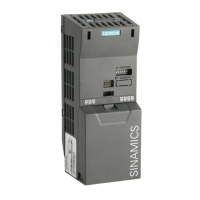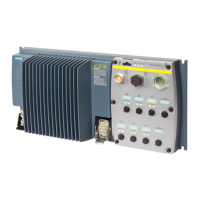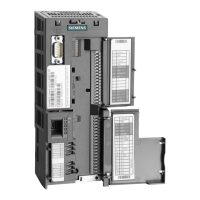Functions
5.7 Closed-loop control
CU240S and CU240E Control Units, FW 3.2
112 Operating Instructions, 03/2009, A5E02440075B AA
5.7.2 Vector control
5.7.2.1 Typical applications for vector control
The vector control can be used to control (closed-loop) the speed and the torque of a motor.
Vector control is used in many cases without directly measuring the motor speed. This
closed-loop control is known as sensorless vector control. The vector control is also used
with a speed encoder in special applications.
Vector control in comparison to V/f control
When compared to V/f control, vector control offers the following advantages:
● The speed is more stable for motor load changes
● Shorter accelerating times when the setpoint changes
● Acceleration and braking are possible with an adjustable maximum torque
● Improved protection of the motor and the driven machine as a result of the adjustable
torque limiting
● The full torque is possible at standstill
Vector control must not be used in the following cases:
● If the motor is too small in comparison to the inverter (the rated motor power may not be
less than one quarter of the rated inverter power)
● If the maximum frequency is more than 200 Hz
● If several motors are connected to one inverter
● If a power contactor is used between the inverter and motor and is opened while the
motor is powered-up
Typical applications for vector control with and without speed encoder
Vector control is typically used for the following applications:
● Hoisting gear and vertical conveyor belts
● Winders
● Extruders
0

